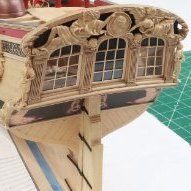HOLIDAY DONATION DRIVE - SUPPORT MSW - DO YOUR PART TO KEEP THIS GREAT FORUM GOING! (Only 68 donations so far out of 49,000 members - Can we at least get 100? C'mon guys!)
×
To help kit developers and kit builders alike-What would you like to see developed for the hobby.
-
Recently Browsing 0 members
- No registered users viewing this page.


Recommended Posts